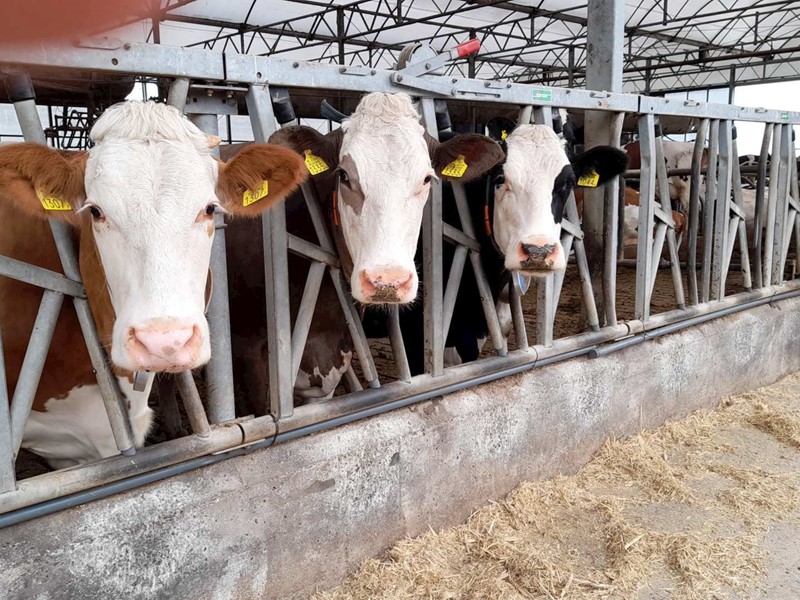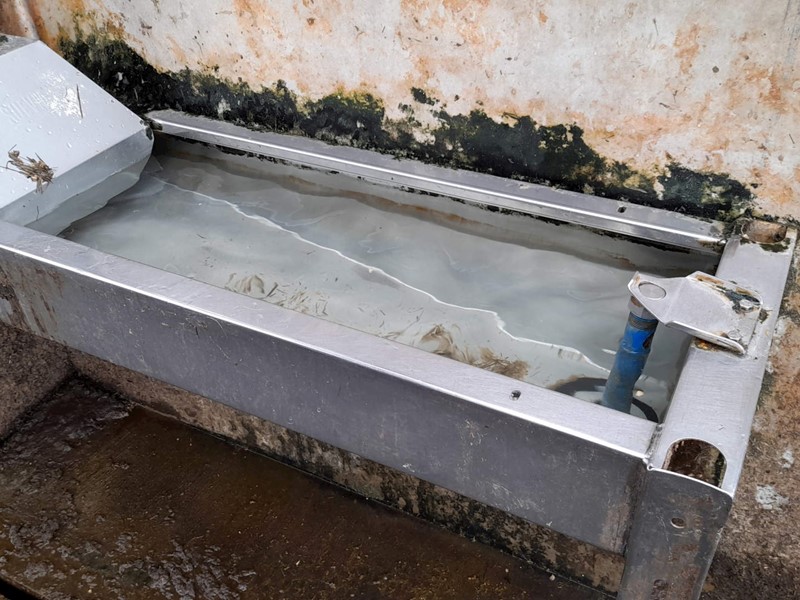Sun, water, food: udder health requires attention from the farmer

In 2021 Carlo and Gert-Jan Verploeg took over her father's dairy farm in Buurmalsen (NL). With ambitious plans, they invested in the future of the farm, including the purchase of milking robots and new cubicles. Despite the fact that the annual milk production increased by no less than 40% after ten years (to 10,500 litres per year), dissatisfaction remained about a continuously high number of mastitis cases. After many years of searching, trying and investing, the solution seems to be found in the combination of factors.
However, the road to this solution has been a long one. "After we took over the business, we sometimes had up to 60 cases of mastitis in the summer. That is why we decided to replace the mattresses in the cubicles with deep litter, even though these had only been installed two years earlier. When this did not have the desired effect, we placed steam cleaning on the robots to prevent cross-contamination".
Remarkable discovery through sharing data study club
That these adjustments are beneficial for animal welfare is beyond dispute, according to Verploeg, but together with the members of the study club they came up with a remarkable discovery: "Via our study club, we can compare a lot of data. We noticed that there were still peaks and troughs in udder health throughout the year, even though the overall trend had improved a lot. By comparing these data, we discovered something remarkable: the number of hours of sunshine had the same peaks and troughs as the somatic cell count over a period of ten years. After some research, it turned out that the earthing of the solar panels and the milking robots were in each other's way. This too has been adjusted, with a positive effect on udder health as a result."
Attention to drinking water
Nevertheless, the conviction remained that there was still room for improvement: "After receiving advice from external advisors, we started looking at the cows' drinking water. In the tanks, it often had a yellowish colour and I wondered whether that could have an effect on the cow's health. The answer is a resounding yes, but it took Watter a while to find the right solution to the problem.
Gert-Jan had in fact previously tried to improve the water in various ways: "Initially we went to tap water. Although the yellow colour in the tanks disappeared, it didn't do anything for our health. So we decided to use the well again, but with a new de-ironer, chlorine doser and degasser. Again without results: the troughs remained slimy and the somatic cell count high.
'Expensive' machine earns itself back rather quickly
By complete coincidence the dairy farmer encountered an article about Watter about colleagues Aart en Willem van der Ham from their study club. The Watter-system removes biofilm and other deposits from the pipelines and drinking troughs by using a biodegradable substance which is produced on site. This makes the Watter-system the only safe and effective application to clean the drinking trough and keeping the trough clean.

Of course, the investment in Watter was not done in a thoughtless way. Enquiries with the Van der Ham family and other acquaintances that also own a Watter system, resulted in the following unequivocal advice: 'Buy it. If the Watter system breaks down, we can buy a new one right away. It is an advice that Gert-Jan has been spreading himself: "Watter has the reputation of being expensive, but it has an enormous positive impact on health and is more than worth it. If I add up how much we have invested in solutions that do not work, I end up with a much higher amount. Watter, on the other hand, pays for itself very quickly."
Always room for improvement
Besides drinking water there is another important component of the ration: food. "After the introduction of Watter, the somatic cell count dropped quickly, but at the beginning of the summer we still had a very bad month", says Gert-Jan, "That was the reason to change the food policy and to hire another food consultant. That turned out to be a good move. But it did not stop there: at the beginning of the winter, we started using a new robot. With this, we are convinced that the last folds have been ironed out and that we have our affairs in order. Finding the right solution is often a tough puzzle, but it's very satisfying when you've finally solved it."
Want to know what clean drinking water can do for your business?
Please contact us for more information at https://www.watter.nl/en/contact/.



